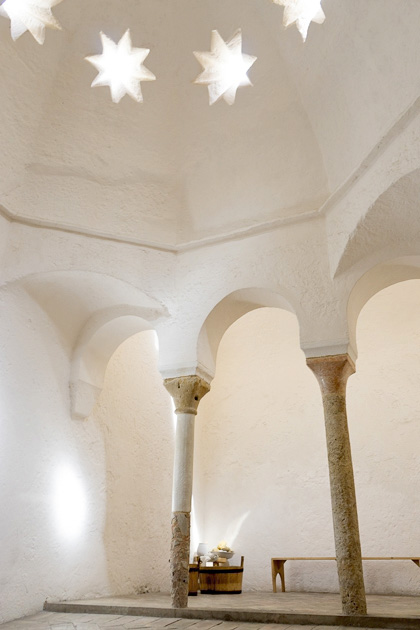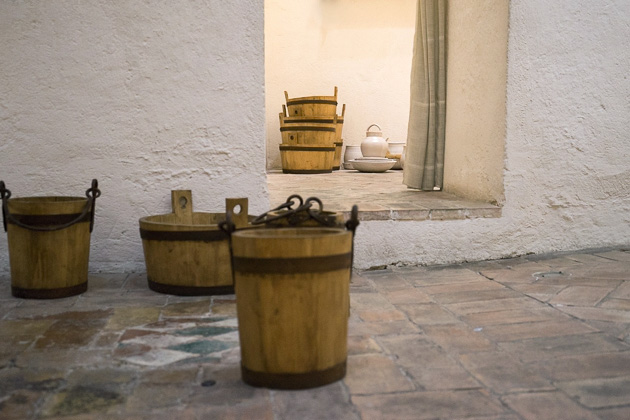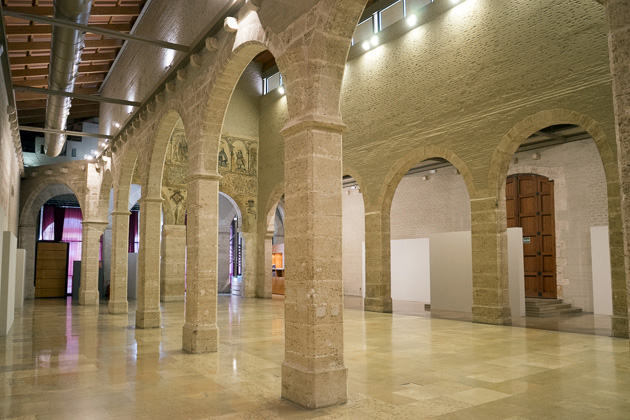The Almudín and the Baños del Almirante
Valencia wears its age well, since many of its oldest elements have been incorporated seamlessly into the modern city. The Baños del Almirante and the Alumdín, for example, fit in so well that it’s easy to forget they’re both 700 years old.

Although the Baños del Almirante are clearly in the Muslim style, they were built in 1313, 75 years after King James I of Aragon had claimed the city for Christianity. That might seem strange, but isn’t entirely surprising. The Moors had ruled Valencia for centuries, after all, and their art, customs and culture were heavily ingrained in the city’s identity. It’s natural that even decades later, Valencia’s architects were mimicking the styles of Islam.
With its multiple domes perforated by star-shaped holes that let in the light, these baths wouldn’t feel out-of-place in Istanbul or any other Arabic land. They were active until the 20th century, and today are protected as a cultural landmark. Within the complex, visitors can tour the rooms meant for bathing in cold, warm, and hot water, and see the buckets that patrons would use to drench themselves.

Nearby, you’ll find the Almudín. This is another structure of Arab design, built around the same time as the baths. It was originally a storehouse for grain, and its name comes from the Arab word “almud,” which was a unit of measure. This is where the nascent Kingdom of Valencia controlled its wheat trade.
The initial appearance of the Almudín was quite different than what we see today; it was expanded in 17th century, when three extra rooms were added to the classic arched hall. But the main, central space is original, and contains frescoes dating from the time of the reconstruction. Restored in 1991, these frescoes are now brightly vibrant (almost to a fault). Currently, the Almudín is an exhibition space for temporary art shows.
Both the Baños del Almirante and the Almudín are right next to the Plaza de la Virgen, and neither requires a lot of time to visit. So there’s no reason not to pop in, and check out two of Valencia’s most historic structures.
Locations on our Map: Baños del Almirante | Almudín
More Pictures of the Baños del Almirante

















More Pictures of the Almudín
















Thanks for bringing back some nice memories. My grandparents used to live near the church of San Esteban. My mother tells stories of how my grandmother used to take her and her siblings to the baths for a wash in the years soon after the [Civil] War. For a few centimos you could get one tub of clean water for everyone to bathe in; the lucky child would be the first one to go in. Many years later, during the late 60s and early 70s, when my parents would take us to visit my grandparents, I can still remember running down the street on my own to go look at all the strange things in the paleontological museum that used to be housed in the Almudin (it is now in its own building in the Jardines de los Viveros). Valencia has changed so much over the years (centuries, millenia), but in many ways, it has barely changed at all.